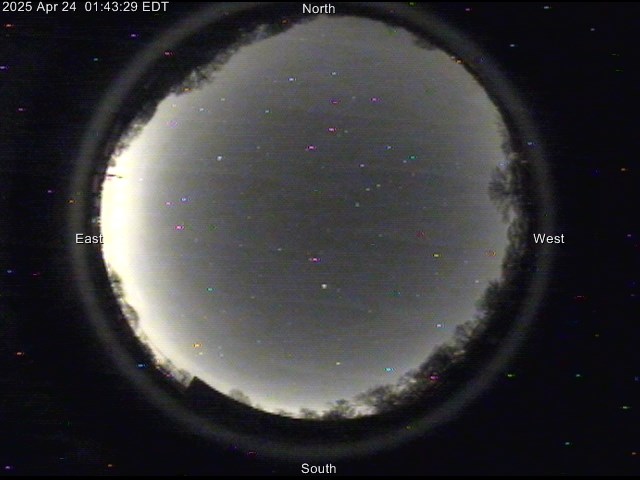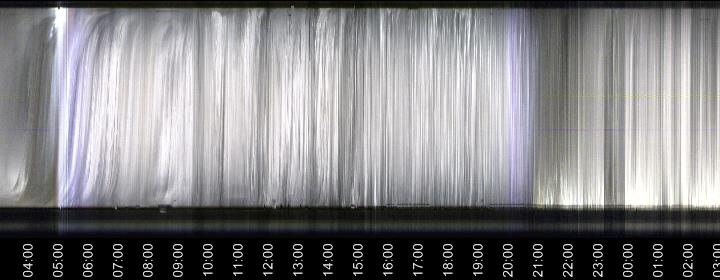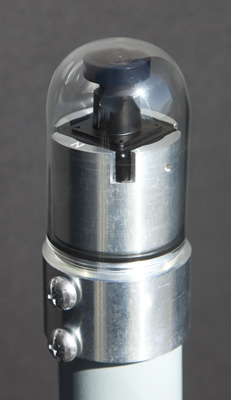All Sky Camera Imagery
Below is a timelapse of the last hour, with new imagery added and removed every 5 minutes. This shows both a full 180 degree view, as well as an unwrapped panoramic image.


Summary of day (single column of image throughout past 24 hours.

Equipment
The all sky imager operating 24/7 at the UACNJ is a video camera from Moonglow Technologies. In a nutshell, the camera creates a fisheye image of the entire sky at 640 x 480 resolution. It provides some simple auto-exposure functions to allow reasonable quality images both day and night. It can look directly at the sun all day without adverse effects (but with column overloading and considerable artifacts around the sun image). On a dark night one can see magnitude 3 stars and a pretty good view of the Milky Way. The continuous video provides excellent documentation of overall sky conditions and does a very good job with night clouds, a topic of great interest at the observatory.
Camera
 A generic photo of the camera, lifted off the box it shipped in, is shown to the left. The camera with fisheye lens is enclosed inside a glass dome, which in turn has a metal base easily attached to a 1.5" pipe. Video and power cables run out the bottom of the camera (and down the pipe). The nominal field of view is almost 190 degrees and the box of pixels actually on the round fisheye image is about 540 x 460. Camera operation is completely hands-off; it sets exposure based on the average brightness, and the nominal exposure time ranges from 1/100000 sec to about 4 seconds. The camera is oriented so that north is at the top of the image.
Video output from the camera is digitized for computer display and storage.
A generic photo of the camera, lifted off the box it shipped in, is shown to the left. The camera with fisheye lens is enclosed inside a glass dome, which in turn has a metal base easily attached to a 1.5" pipe. Video and power cables run out the bottom of the camera (and down the pipe). The nominal field of view is almost 190 degrees and the box of pixels actually on the round fisheye image is about 540 x 460. Camera operation is completely hands-off; it sets exposure based on the average brightness, and the nominal exposure time ranges from 1/100000 sec to about 4 seconds. The camera is oriented so that north is at the top of the image.
Video output from the camera is digitized for computer display and storage.
Installation
 The current camera installation is shown in this photo. The camera is mounted on top of a 1.5" aluminum pipe that is attached to the house roof. The camera is slightly below the roof peak but still provides a pretty nice view of the sky.
Cables for the camera are located inside the pipe and routed into the house through the same conduit used for SETI and the Magnetometer.
The camera dome is susceptible to morning dew and winter icing. To minimize this our camera kit included a snap on dew heater ring for the dome. It measures the ambient temperature, and applies the correct amount of heat automatically.
The current camera installation is shown in this photo. The camera is mounted on top of a 1.5" aluminum pipe that is attached to the house roof. The camera is slightly below the roof peak but still provides a pretty nice view of the sky.
Cables for the camera are located inside the pipe and routed into the house through the same conduit used for SETI and the Magnetometer.
The camera dome is susceptible to morning dew and winter icing. To minimize this our camera kit included a snap on dew heater ring for the dome. It measures the ambient temperature, and applies the correct amount of heat automatically.




